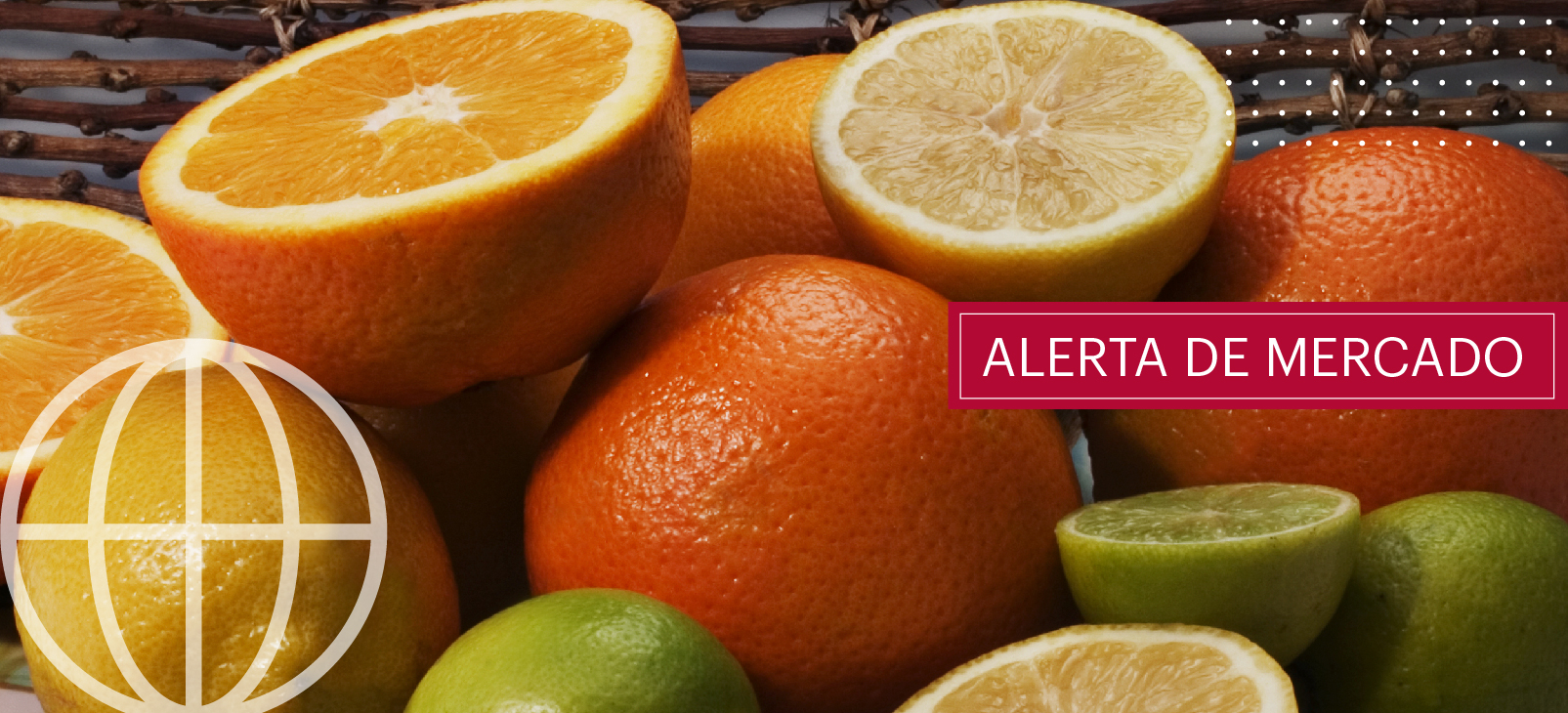- Home
- About us
- News
- Events
- EXPORT Export
-
BUY
Buy
Buy
- INVEST Invest
- COUNTRY BRAND Country Brand
-
INFORMATION CENTER
Information center
InformationCenterInformationCenterReports Country reports Department reports Foreign trade reports Product-Destination worksheet Sectors reports Work documentsStatistical information Classification Uruguay XXI Exports Imports Innovative National Effort Macroeconomic Monitor Tools Buyers Exporters Investors
- Contact
-
Languages
Uruguayan citrus fruits in the Finnish market
Uruguayan citrus arrived in Finland and showed its potential to compete in this market as an off-season fruit.
Share:

Uruguayan citrus arrived in Finland and showed its potential to compete in this market as an off-season fruit. The Finnish Customs Service monitors the condition of fresh fruit and vegetables imported from outside the EU by means of document checks and plant health checks.
Finnish consumer
The annual per capita consumption of citrus fruits was 14.45 kg in 2019. Finnish consumers have a strong interest in increasing the variety of products they consume. This includes fruits, in particular tropical or exotic ones.
In Finland, consumers are mostly "price-conscious" when it comes to food, and especially when buying fruit. However, Finnish society is also concerned with the quality, origin, and environmental aspects of production. That is why interest in organic food has grown.
There is also interest in functional foods (nutritional and health-promoting aspects) for which consumers are willing to pay higher prices.
For that reason, hybrid consumption (high quality of the product with a higher degree of social and emotional satisfaction) prevails over price. This applies to products already incorporated into the basic basket such as citrus fruits.
Finland's imports of citrus fruits
In recent years Finland has imported citrus fruit according to the following detail based on Eurostat statistics. Values are expressed in thousands of dollars.
| NCM | Product description | 2015 | 2016 | 2017 | 2018 | 2019 |
| 080510 | Fresh or dried oranges | 21.535 | 25.335 | 24.163 | 31.683 | 30.820 |
| 080522 | Clementine | 0 | 0 | 23.828 | 25.417 | 27.337 |
| 080550 | Lemons "Citrus limonum" and limes "Citrus aurantifolia, Citrus latifobia", fresh... |
9.378 | 12.885 | 12.292 | 14.038 | 12.263 |
| 080521 | Mandarins (including tangerines and satsumas) | 0 | 0 | 17.534 | 18.711 | 12.179 |
| 080529 | Wilkings and similar citrus hybrids, fresh or dried | 0 | 0 | 1.185 | 1.972 | 3.520 |
| 080540 | Grapefruit, fresh or dried | 2.274 | 2.783 | 3.264 | 2.941 | 2.730 |
| 080590 | Citrus fruits, fresh or dried (ex. oranges, lemons "Citrus limonum", ... |
141 | 221 | 1.850 | 38 | 48 |
| 080520 | Mandarins, incl. tangerines and satsumas; clementines, wilkings and similar citrus hybrids |
40.339 | 45.078 | 0 | 0 | 0 |
It should be noted that 35% of this total corresponds to fresh oranges and 31% to clementines. Lemons and tangerines account for 14% each.
By 2019, the top 10 countries supplying the local citrus market in terms of value are:
| Exporters | Imported value 2015 |
Imported value 2016 |
Imported value 2017 |
Imported value 2018 |
Imported value 2019 |
| Worldwide | 73.668 | 86.302 | 84.116 | 94.800 | 88.897 |
| Spain | 32.027 | 38.788 | 36.195 | 40.119 | 44.107 |
| Netherlands | 13.036 | 15.482 | 15.835 | 19.125 | 17.883 |
| Germany | 8.935 | 9.572 | 10.350 | 13.035 | 12.135 |
| Egypt | 5.729 | 6.642 | 5.334 | 6.446 | 3.172 |
| South Africa | 2.436 | 2.143 | 2.812 | 2.111 | 2.953 |
| Italy | 259 | 765 | 1.286 | 2.378 | 2.587 |
| Morocco | 1.240 | 1.450 | 1.941 | 2.925 | 2.294 |
| Israel | 6.885 | 7.238 | 5.581 | 6.319 | 1.823 |
| Denmark | 262 | 252 | 275 | 702 | 653 |
| Argentina | 461 | 493 | 382 | 273 | 314 |
Distribution channels
The general food retail market in Finland is highly concentrated. Almost all fresh fruit and vegetables are sold through supermarkets, hypermarkets, and other shops belonging to one of the few retail chain groups.
The 2 largest retail chains in Finland are the K Group and the S Group, with a market share of almost 80%. In 2016, the share of S Group was 47.2% and that of K Group was 36.2%. Lidl took 3rd place with 8.8%.
It is also vertically integrated with supply companies (wholesalers) and distribution companies (such as Kespro, Inex Partners, and Tuko Logistics). This allows maintaining an efficient delivery system and a national network of supermarkets and other stores in a country that has a very low population density, especially in the north.
Additionally, in many cases, the fruit supply is centralized at the European level. The Finnish Kesko food is a member of Associated Marketing Services (AMS), a strategic purchasing alliance based in the Netherlands.
The also Finnish Sgroup has its own distribution channels and some purchasing decisions are made in such purchasing alliances. Purchasing is often centralized nationally for large volumes of (core) products directly from the countries of origin. The Trading A/S Cooperative (Nordic association for international purchasing) has a headquarters in Valencia, Spain from where it organizes international tenders for its member cooperatives.
Source: Prepared by Uruguay XXI on the basis of data from the Embassy of Uruguay in Finland.
